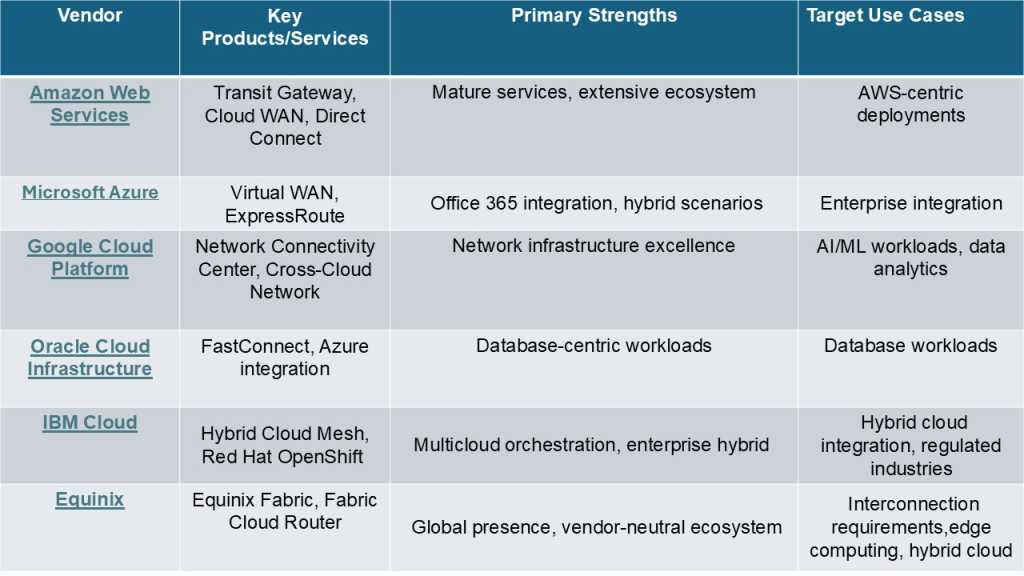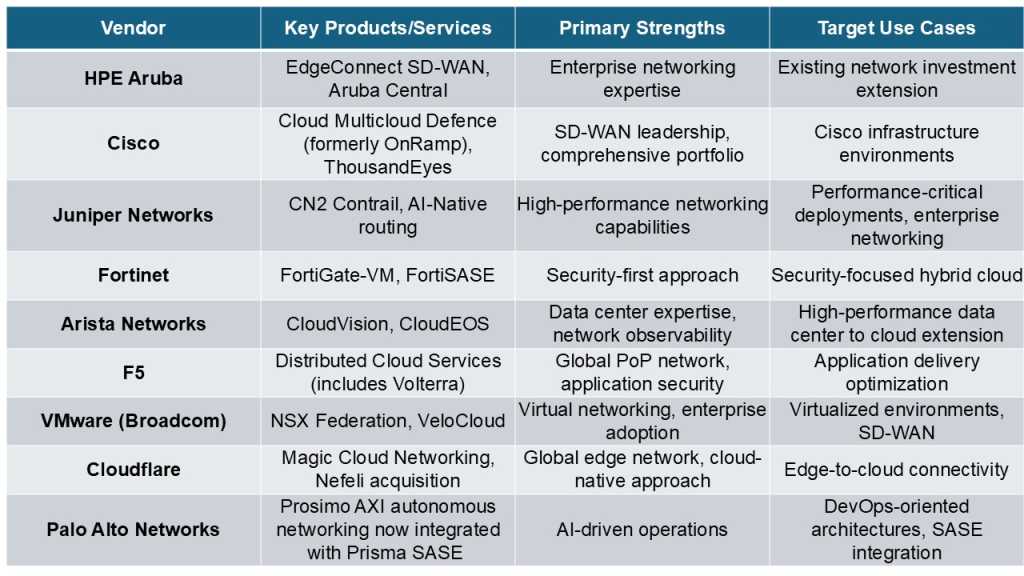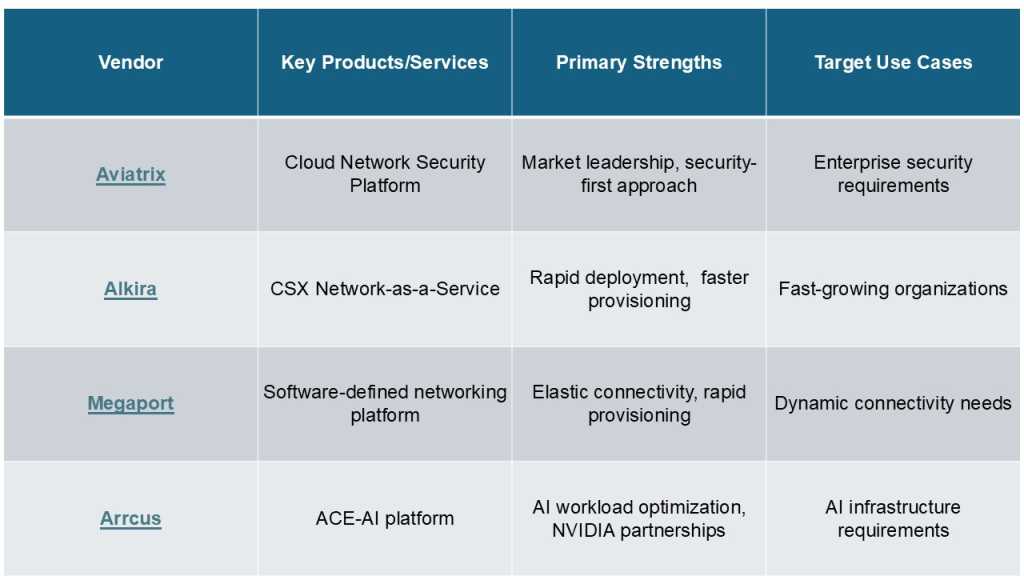
Multicloud isn’t a fad. It’s a sound business strategy for many types of organizations.
At the most basic level, multicloud is about using resources and services across multiple cloud providers. Those services could include both infrastructure and software-as-a-service (SaaS) capabilities.
While it’s easy enough for any organization to connect to any one single cloud provider at a time for any single service, it gets a bit more complex for more integrated multicloud approaches. That’s where the growing market for multicloud networking service (MCNS) fits in.
Multicloud networking involves using services from multiple cloud providers to enhance flexibility, reduce costs and avoid vendor lock-in. As enterprises increasingly rely on several clouds, MCNS provides a unified way to manage connectivity, security, and visibility across these environments, treating them as a single network rather than isolated systems.
It’s a fast growing market with analyst estimates projecting double digit revenue growth in the coming years. FMI pegs 2024 revenue for the space at $4.2 billion with a forecast of $32.4 billion by 2034. Research and Markets estimates 2024 MCNS revenue at $11.14 billion with a forecast of $42.40 billion by 2030. Research firm MarketsandMarkets estimates global multicloud networking market to reach $7.6 billion in 2027 at a CAGR of 22.5%.
This transformation reflects a fundamental shift in enterprise IT strategy, with most organizations now operating across multiple cloud platforms. The question is no longer whether to adopt multicloud networking, but how to choose the right provider to navigate this complex landscape successfully.
Core capabilities required for multicloud networking services
Managing multiple cloud environments manually can quickly become unworkably complex. Modern MCNS solutions automate the process, with a set of core capabilities that includes the following:
Policy consistency across clouds: MCNS solutions enable organizations to define policies once and enforce them universally. This consistency reduces configuration errors, simplifies compliance management, and accelerates deployment of new services across multiple clouds.
Operational streamlining and complexity reduction: Organizations report significant reductions in provisioning time and management overhead when implementing MCNS. These platforms provide unified management interfaces that eliminate the need to navigate multiple cloud provider consoles.
Application performance optimization: MCNS platforms can automatically route traffic through optimal paths, balance loads across cloud providers, and even migrate workloads dynamically based on performance requirements and cost considerations.
Unified security implementation: MCNS platforms can extend enterprise security policies into multicloud environments consistently through microsegmentation, zero-trust networking principles, identity federation, and centralized threat detection across all cloud platforms.
Centralized monitoring and analytics: MCNS solutions offer comprehensive visibility into network performance, security postures, and cost optimization opportunities across the entire multicloud infrastructure. These insights would be impossible to achieve through individual cloud provider tools alone.
The evolving vendor landscape: Cloud native versus specialists
The MCNS market has evolved into a complex ecosystem spanning multiple categories of providers, each offering advantages and targeting different enterprise needs.
The landscape can be broadly categorized into cloud providers offering native capabilities and an increasingly diverse array of vendors bringing focused expertise to multicloud networking challenges.
Cloud providers leverage their infrastructure investments and ecosystem integration to deliver tightly coupled multicloud networking services. Specialist vendors offer vendor-neutral approaches with focused innovation in specific areas such as security, performance optimization, or operational simplicity. Understanding this vendor landscape requires examining not just technical capabilities, but also strategic positioning, target markets and long-term viability.
Cloud providers with multicloud capabilities
Major cloud providers have invested heavily in native multicloud networking capabilities, recognizing that customer demands extend beyond single-provider solutions. These vendors leverage their existing infrastructure investments to deliver tightly integrated solutions within their cloud ecosystems.
Cloud providers excel at ecosystem integration but may create vendor lock-in challenges for organizations pursuing true multicloud strategies.
IDG
Traditional networking vendors extending capabilities
Established enterprise networking vendors are adapting their proven technologies and customer relationships to address multicloud networking requirements. These companies bring decades of enterprise networking experience but are newer to cloud-native approaches.

Traditional networking vendors offer proven enterprise capabilities and existing customer relationships, but may lag in cloud-native innovation compared to pure-play specialists.
IDG
Specialist multicloud networking specialists
These vendors have largely built their business models around solving multicloud networking challenges. They offer vendor-neutral platforms designed specifically for cross-cloud connectivity, security and management without favoring any particular cloud provider.

Pure-play specialists typically deliver superior cross-cloud functionality and vendor neutrality but may require more effort to integrate with existing cloud-native services.
IDG
Expert perspectives on MCNS evaluation and implementation
We spoke to several leading consultants and practitioners to get their insights into the real-world challenges and considerations organizations face when implementing multicloud networking strategies.
Soumya Gangopadhyay, Technology Strategist at EY, observes significant growth in client demand for multicloud networking guidance.
“The rise of multicloud usage is prompting many organizations to rethink network capabilities,” Gangopadhyay told Network World. “We see businesses looking to identify solutions that either connect, track, secure and automate cloud workloads or involve some combination of the four.”
EY’s client interactions reveal consistent patterns in organizational concerns. Gangopadhyay noted that common issues and concerns include striving for flexible, integrated and efficient networking services while addressing costs and avoiding vendor lock-in.
The consulting perspective emphasizes that skills gaps represent significant challenges for companies implementing multicloud infrastructure.
“Organizations often lack in-house expertise to design, implement and manage multicloud architectures, underscoring the importance of cloud-native networking solutions offering centralized control, automation, and observability,” Gangopadhyay said.
For evaluation methodology, EY recommends a structured approach beyond simple feature comparisons. The recommended evaluation framework includes:
- Business alignment: Adopt a structured approach that starts by aligning business objectives to define success, whether it’s reducing latency, improving security, enabling hybrid workloads, or avoiding vendor lock-in
- Architecture assessment: Assess architecture and integration flexibility to ensure the MCNS platform integrates well with existing cloud stacks, on-prem infrastructure and edge environments.
- Operational considerations: Evaluate operational simplicity and governance, prioritizing platforms that offer centralized policy management, automated provisioning, and built-in compliance controls.
- Security and resilience: Prioritize platforms that embed security features like zero trust architectures, network segmentation, threat detection and integration with the existing security stack.
Practitioner perspective: Confluent’s multicloud networking experience
It’s also valuable to understand how organizations deploy multicloud. Enterprise vendor Confluent’s deployment scale illustrates the complexity modern organizations face.
“Confluent deploys thousands of Kubernetes clusters consisting of tens of thousands of compute instances across AWS, GCP and Azure public clouds,” Nimisha Mehta, an engineer at Confluent, told Network World.
The performance requirements drive architectural decisions. She noted that Confluent’s applications are highly data intensive and sensitive to performance and latency. Mehta explained that since her organization deploys applications across multiple cloud regions all over the globe, it has to manage a cohesive and unified infrastructure layer that applications can be deployed on to and ensure seamless connectivity between them.
Confluent’s approach emphasizes custom solutions when necessary.
“We have in-house solutions that we build to ensure we have a unified flat networking layer such that services in the same region can communicate across virtual cloud networks,” Mehta said.
For vendor evaluation, Mehta emphasizes practical considerations, such as a thorough cost-benefit analysis. The evaluation criteria should include specific company and infrastructure requirements, vendor support, ability to customize vendor products and the cost model.
Integration capabilities prove critical in practice.
“Ensure the solution integrates seamlessly with your current and future infrastructure setup, and supports the scalability requirements of your organization,” advises Mehta.
Key recommendations for MCNS vendor selection and deployment
Both of these expert viewpoints converge on several critical recommendations that organizations should prioritize when evaluating and implementing multicloud networking solutions:
- No universal solution exists. Organizations should resist the temptation to seek a single vendor that addresses every multicloud networking requirement and instead focus on solutions that excel in their specific priority areas.
- Build versus buy trade-offs matter. The choice between managed solutions and self-managed infrastructure involves significant trade-offs that organizations must evaluate carefully. Mehta notes that the more ”managed” a solution is, the less customizable it might be
- Continuous monitoring is essential. The complexity of multicloud environments demands ongoing attention to performance, costs, and security.
- Disaster recovery capabilities are a must. The experts highlight disaster recovery as a critical but often overlooked consideration in MCNS implementation. “Plan for disaster recovery by ensuring sufficient automated backups and failover mechanisms, with redundancy across availability zones or regions in cloud setups,” advises Mehta.
- Vendor relationships should be strategic. Finally, both perspectives emphasize the importance of viewing MCNS providers as strategic partners rather than simple service providers.
“Think of vendors as partners and maintain open communication to discuss architecture and strategy and ensure alignment as you progress,” Mehta said.
Source:: Network World
